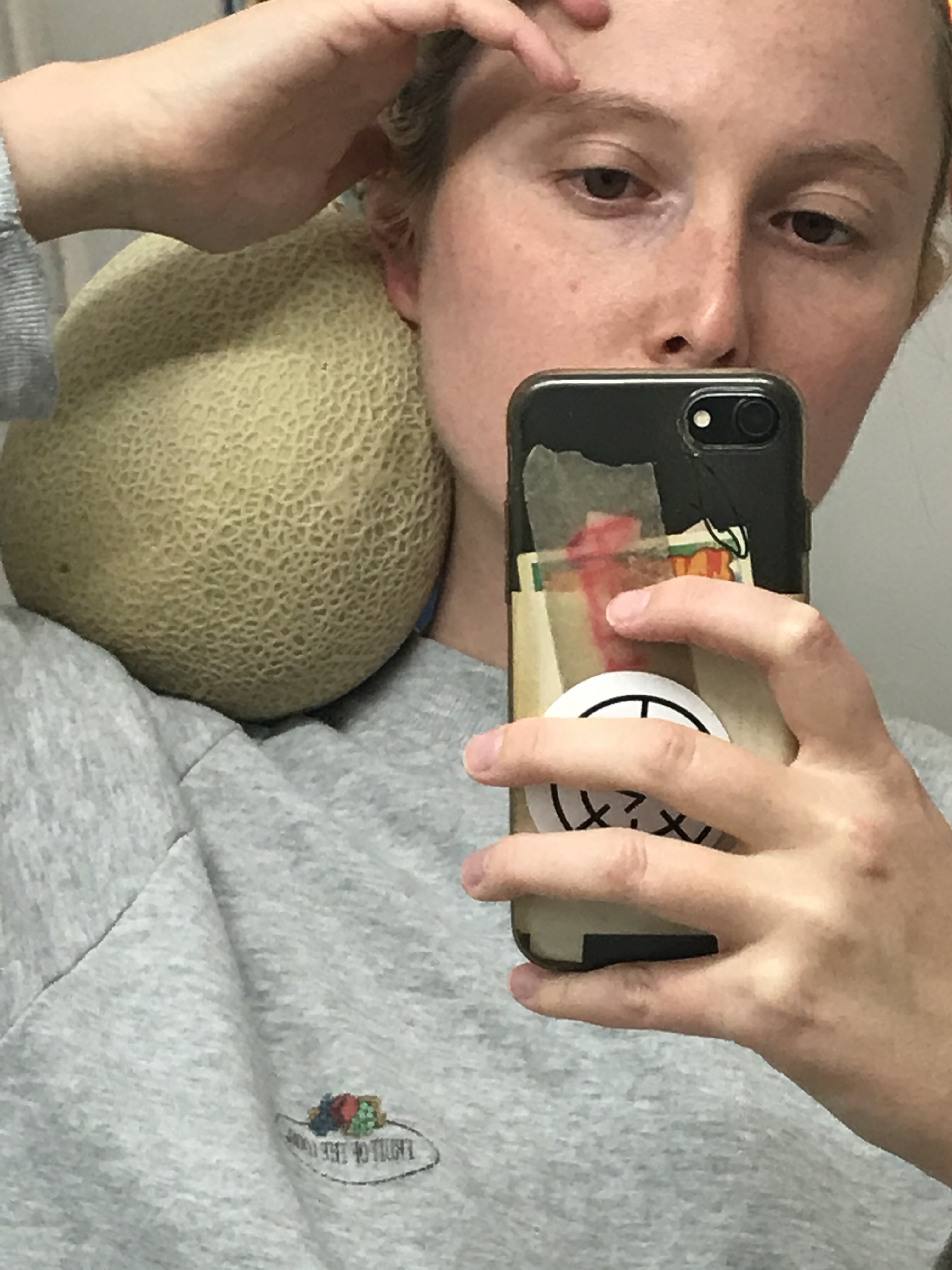


Despite the Hapits, They Practice
18th - 20th of June 2025, The Lab Copenhagen (during 3 days of design)
Collaborative Objects by Bettina Willnauer and Lino Gasparitsch
The installation “Despite the Hapits, They Practice” is a reflection on the nature of collaboration — as disruption, as dialogue, as a shared space of experimentation. Created jointly by Bettina Willnauer and Lino Gasparitsch, the work explores what happens when individual practices intersect and familiar rhythms are interrupted in favor of exchange. The installation invites us to consider how cooperation can act as a gentle, yet radical resistance to entrenched patterns — both in art and in society.
At the center of the installation is a large hand-tufted tapestry by Bettina Willnauer, depicting surreal and poetic scenes inspired by Ørstedsparken, a public park in Copenhagen. Statues come to life: they hold hands, wrestle, and read to one another. These imagined interactions turn static monuments into active symbols of connection.
Among the figures is a reference to The Wrestlers, a classical sculpture cast from a Roman copy of a Greek original, and to the memorial of Natalie Zahle, the Danish educator and reformer. Though Zahle was not publicly active in the women’s rights movement, her impact on education marked a quiet but profound form of activism — a gesture echoed in the ethos of this collaborative installation.
The motifs within the tapestry flow seamlessly into the objects surrounding it. Lino Gasparitsch contributes a series of vases and benches that build on the dialogue of forms and symbols. The vases, made from wood and sealed with barrel pitch, feature a recurring teardrop — or perhaps water drop — motif, also found in Willnauer’s tapestry. These shapes are burned into the surface with an ornamental branding stamp. A tool typically used for product marking becomes a playful and expressive element, reimagined here to evoke both craftsmanship and emotion.
The benches continue the exploration of materials and making. Starting from standardized aluminum profiles — usually combined with plastic connectors — they instead use hand-crafted walnut joints. This shift highlights the connections themselves: elements often overlooked or mass-produced become central through craft. The work sits between industry and handwork, testing what new qualities emerge when the two meet.
Throughout “Despite the Hapits, They Practice”, Willnauer and Gasparitsch propose a space where artistic disciplines and working methods collide, merge, and evolve. The project becomes a choreography of materials, references, and gestures — all shaped by the willingness to pause, listen, and build together. In times of polarization and hardened positions, the installation is a quiet call for complexity, for empathy, and for collaborative practice as a form of resistance — and renewal.
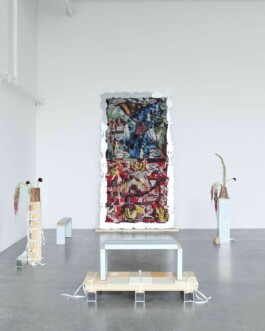
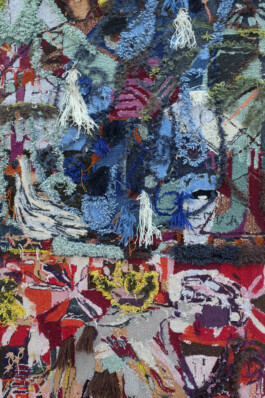
Ørstedsparken, 2025
Wool, single piece
framed (300cm x 160cm)
without frame (280cmx140cm)
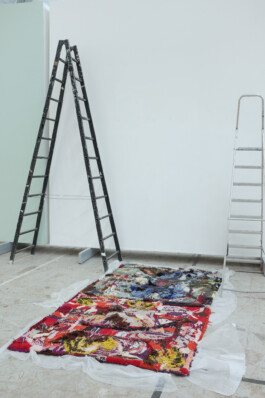
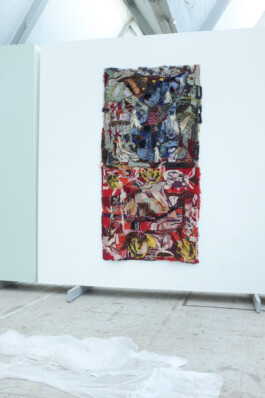
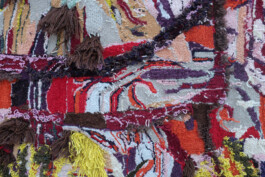

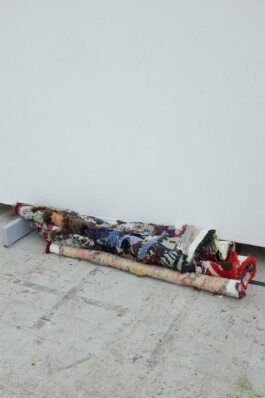
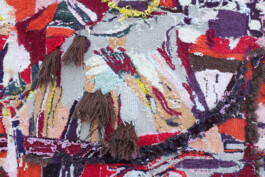
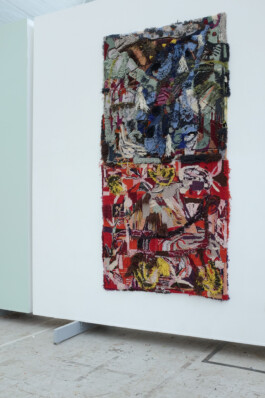
Despite the Hapits, They Practice
18th - 20th of June 2025, The Lab Copenhagen (during 3 days of design)
Collaborative Objects by Bettina Willnauer and Lino Gasparitsch
The installation “Despite the Hapits, They Practice” is a reflection on the nature of collaboration — as disruption, as dialogue, as a shared space of experimentation. Created jointly by Bettina Willnauer and Lino Gasparitsch, the work explores what happens when individual practices intersect and familiar rhythms are interrupted in favor of exchange. The installation invites us to consider how cooperation can act as a gentle, yet radical resistance to entrenched patterns — both in art and in society.
At the center of the installation is a large hand-tufted tapestry by Bettina Willnauer, depicting surreal and poetic scenes inspired by Ørstedsparken, a public park in Copenhagen. Statues come to life: they hold hands, wrestle, and read to one another. These imagined interactions turn static monuments into active symbols of connection.
Among the figures is a reference to The Wrestlers, a classical sculpture cast from a Roman copy of a Greek original, and to the memorial of Natalie Zahle, the Danish educator and reformer. Though Zahle was not publicly active in the women’s rights movement, her impact on education marked a quiet but profound form of activism — a gesture echoed in the ethos of this collaborative installation.
The motifs within the tapestry flow seamlessly into the objects surrounding it. Lino Gasparitsch contributes a series of vases and benches that build on the dialogue of forms and symbols. The vases, made from wood and sealed with barrel pitch, feature a recurring teardrop — or perhaps water drop — motif, also found in Willnauer’s tapestry. These shapes are burned into the surface with an ornamental branding stamp. A tool typically used for product marking becomes a playful and expressive element, reimagined here to evoke both craftsmanship and emotion.
The benches continue the exploration of materials and making. Starting from standardized aluminum profiles — usually combined with plastic connectors — they instead use hand-crafted walnut joints. This shift highlights the connections themselves: elements often overlooked or mass-produced become central through craft. The work sits between industry and handwork, testing what new qualities emerge when the two meet.
Throughout “Despite the Hapits, They Practice”, Willnauer and Gasparitsch propose a space where artistic disciplines and working methods collide, merge, and evolve. The project becomes a choreography of materials, references, and gestures — all shaped by the willingness to pause, listen, and build together. In times of polarization and hardened positions, the installation is a quiet call for complexity, for empathy, and for collaborative practice as a form of resistance — and renewal.


Ørstedsparken, 2025
Wool, single piece
framed (300cm x 160cm)
without frame (280cmx140cm)






